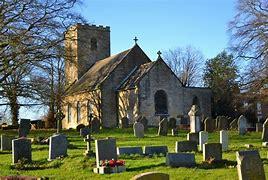Bishop Norton is a village and the main settlement of the civil parish of the same name in the West Lindsey district of Lincolnshire, England. The village is approximately 8 miles (13 km) north-west from the market town of Market Rasen, and is close to the A15 road. According to the 2001 Census it had a population of 233, including Atterby and increasing to 308 at the 2011 census.
The name of Bishop Norton derives from the fact that it was the most northerly of the twelve manors belonging to the Bishop based upon his chief manor at Stow. The bishop in question since the Norman Conquest was the Bishop of Lincoln, but Bishop Norton and the twelve manors date from much earlier during the periods when the sees of Lichfield, Leicester, Lindsey (Sidnacester) or Dorchester (on-Thames) respectively governed the ecclesiastical life of the area.
The name of Bishop Norton appears variously in the record as Nortune, Nortun, Bishop's Norton, and Norton Episcopi. Until 1974, when West Lindsey District Council was formed, Bishop Norton civil parish had been a constituent part the Caistor Rural District.

Atterby is a hamlet and former civil parish, now in the parish of Bishop Norton, in the West Lindsey district of Lincolnshire, England. It lies 1 mile (1.6 km) north of Bishop Norton. In 1931 the parish had a population of 82. Atterby was formerly a township in the parish of Bishop-Norton, in 1866 Atterby became a civil parish, on 1 April 1936 the parish was abolished and merged with Bishop Norton.
Atterby is now little more than a cluster of buildings at a crossroads; in the 19th century it was larger with 134 inhabitants, a butcher, shop and a carrier.
By the early 20th century the Everett family had established a bus service, initially with a horse drawn omnibus and later as pioneers in the use of motorised buses. One of their early vehicles was the "Silver Queen". Everett's buses operated in the local area for many years until quite recently. In 2006 JD Everett is still in the village but as a haulage company.
Grade II listed Atterby Mill lies towards the A15 along a private road. It was powered by water from Atterby Beck (which separates the hamlet from Bishop Norton) supplemented by a steam engine. It produced animal feed ground from grain. It was built on the site of a medieval mill. Nearby was the site of an old post windmill, long abandoned.
The above information was sourced from Wikipedia; further information can be obtained by clicking on the links provided above.
